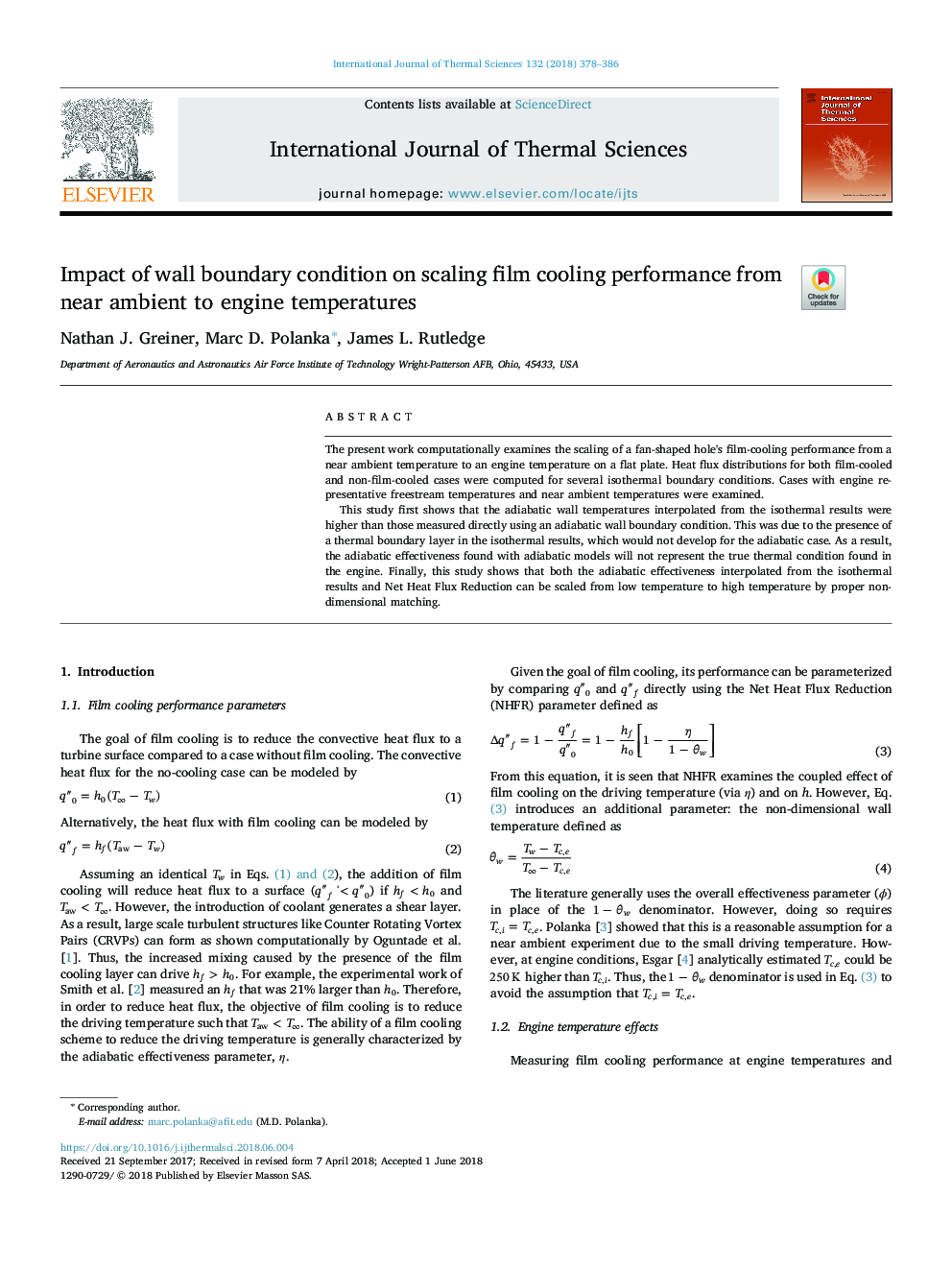| Article ID | Journal | Published Year | Pages | File Type |
|---|---|---|---|---|
| 7060611 | International Journal of Thermal Sciences | 2018 | 9 Pages |
Abstract
This study first shows that the adiabatic wall temperatures interpolated from the isothermal results were higher than those measured directly using an adiabatic wall boundary condition. This was due to the presence of a thermal boundary layer in the isothermal results, which would not develop for the adiabatic case. As a result, the adiabatic effectiveness found with adiabatic models will not represent the true thermal condition found in the engine. Finally, this study shows that both the adiabatic effectiveness interpolated from the isothermal results and Net Heat Flux Reduction can be scaled from low temperature to high temperature by proper non-dimensional matching.
Related Topics
Physical Sciences and Engineering
Chemical Engineering
Fluid Flow and Transfer Processes
Authors
Nathan J. Greiner, Marc D. Polanka, James L. Rutledge,
